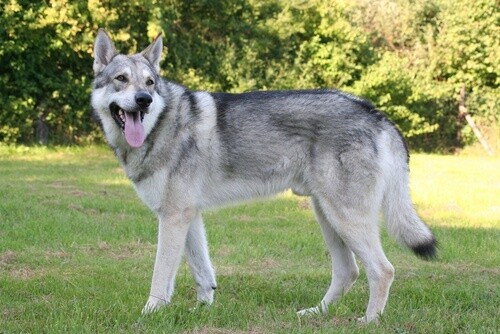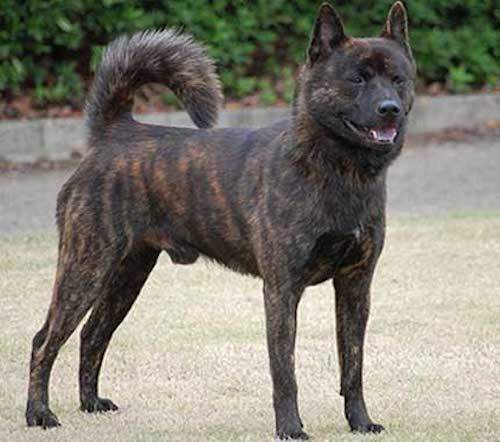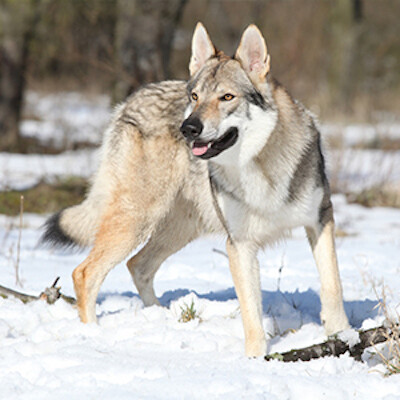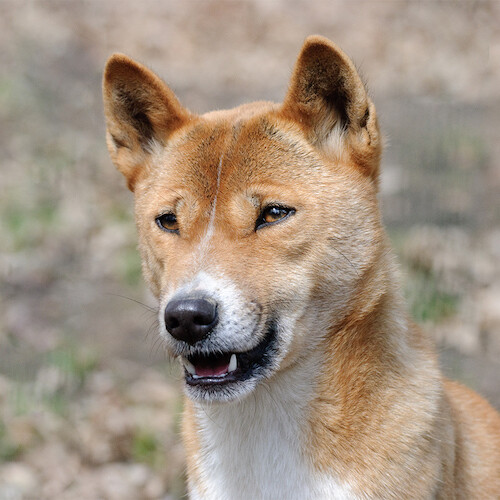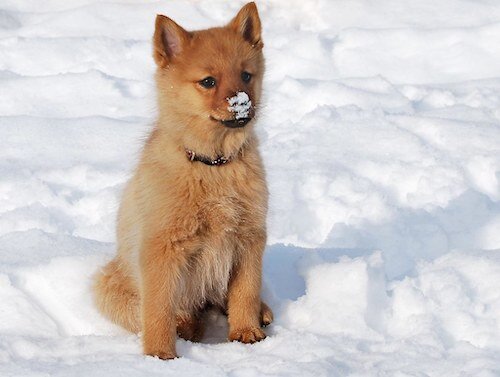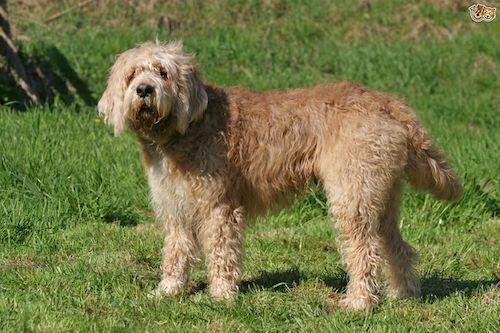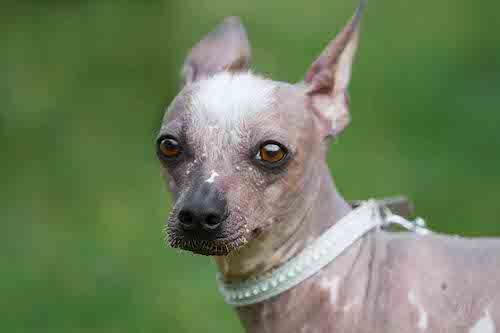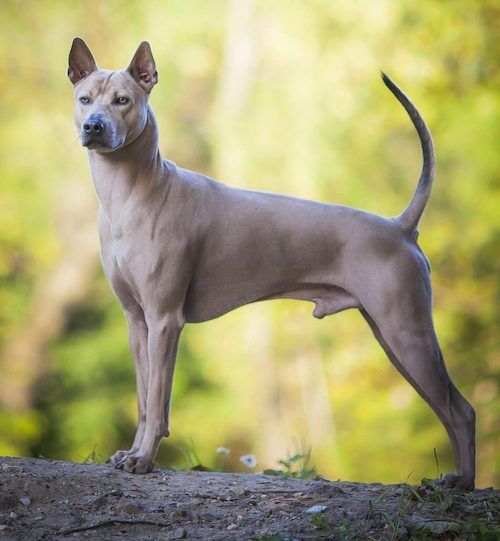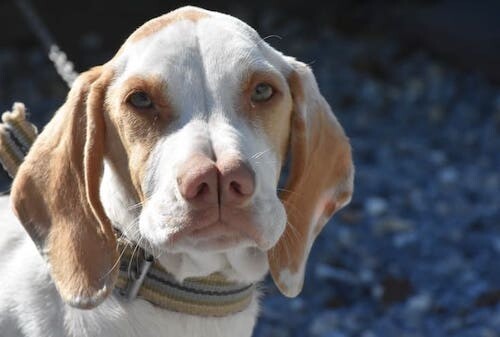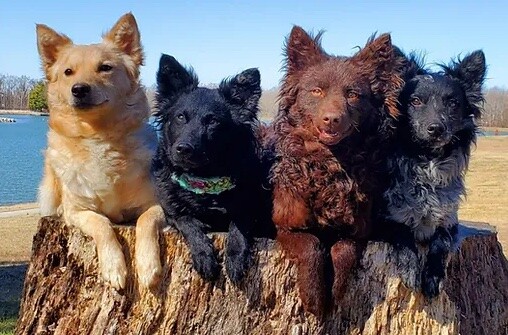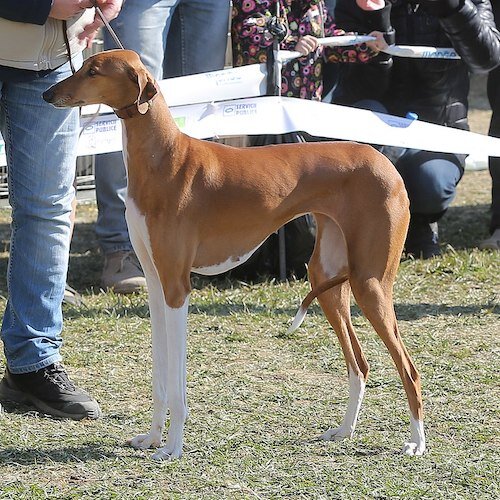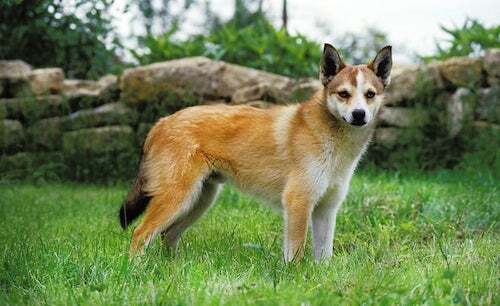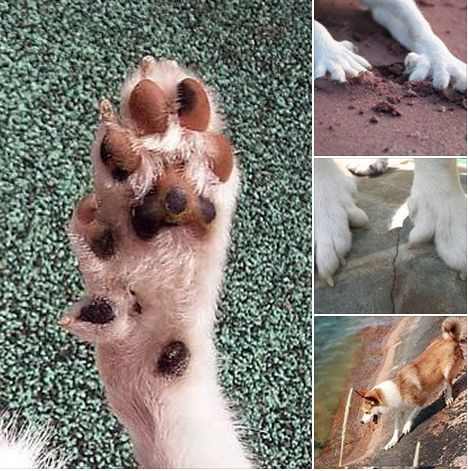The world of dog breeds is incredibly diverse, with hundreds of recognized breeds, each possessing its own unique characteristics and history. Among this vast array of breeds, some stand out as exceptionally rare and elusive, captivating the hearts of dog enthusiasts with their distinct features, histories, and limited populations.
In this exploration, we will delve into the top 13 rarest dog breeds in the world, shedding light on their origins, the factors contributing to their rarity, and the dedicated efforts of breed enthusiasts and conservationists to ensure their survival.
Saarloos Wolfdog
The Saarloos Wolfdog a very rare dog breed, named after its creator, Dutch breeder Leendert Saarloos, is an exceptionally rare and intriguing breed known for its striking resemblance to its wild wolf ancestors.
This breed came into existence in the early 20th century when Saarloos crossed a German Shepherd with a Eurasian wolf in an attempt to combine the loyalty and trainability of a domestic dog with the wild and untamed spirit of a wolf. The resulting breed, the Saarloos Wolfdog, possesses a unique combination of wolf-like physical characteristics and the intelligence and loyalty of a domestic dog.
One of the factors contributing to the extreme rarity of the Saarloos Wolfdog is its relatively small breeding population. The breed’s lineage is traced back to a limited number of foundation dogs, and responsible breeders are dedicated to preserving its unique characteristics while ensuring healthy and well-socialized puppies.
Additionally, the this rare dog breed is not widely recognized by major kennel clubs or canine organizations, which further limits its visibility and availability on the global scale.
Due to its wolf-like appearance and inherent need for proper training and socialization, this breed is not recommended for novice dog owners, which can also contribute to its rarity, as it requires dedicated and experienced handlers who can meet its specific needs.
Overall, the Saarloos Wolfdog’s scarcity adds to its allure and mystique among dog enthusiasts who appreciate its fascinating blend of wild and domestic traits.
Kai Ken
The rare Kai Ken, often referred to as the “Tora Inu” in Japan due to its tiger-striped coat pattern, is an exceptionally rare and unique breed that hails from the rugged mountainous regions of Japan. This breed is not only a natural treasure but also a national monument in its homeland, where it has been designated as a protected species.
The Kai Ken’s rarity stems from its limited geographical distribution, with the majority of these dogs residing in the remote areas of Japan, particularly in the Kai Province from which it takes its name. The breed’s historical use as a hunting dog for small game like boar and deer in the dense Japanese forests has contributed to its survival and isolation in these remote regions.
The Kai Ken is renowned for its remarkable loyalty, agility, and strong hunting instincts. Despite its rare status, it has a dedicated and passionate following of enthusiasts both in Japan and around the world who work diligently to preserve the breed’s unique traits and genetic diversity. Responsible breeding programs are crucial for maintaining the Kai Ken’s purity and health, given its limited gene pool.
These factors, combined with strict regulations governing the export of this rare dog from Japan, contribute to the breed’s scarcity in other parts of the world. As such, acquiring a Kai Ken often involves a waiting period and a deep commitment to preserving the breed’s heritage and well-being.
Xoloitzcuintli (Xolo)
The rare Xoloitzcuintli, affectionately known as the Xolo, is one of the world’s oldest and rarest dog breeds, with a history that dates back over 3,000 years to pre-Columbian Mesoamerica. This rare dog breed, often associated with the ancient Aztecs and Maya civilizations, was highly revered for its spiritual significance, believed to possess healing and protective powers. Despite its historical prominence, the Xoloitzcuintli has faced challenges that have contributed to its rarity today.
One of the factors contributing to the Xolo’s rarity is its historical role as a sacred and ceremonial dog, which led to its decline during the Spanish colonization of the Americas when many indigenous traditions were suppressed. Additionally, this breed nearly vanished during the early 20th century due to a combination of factors such as disease, crossbreeding, and limited geographical distribution.
However, dedicated breed enthusiasts and conservationists have worked tirelessly to revive the Xoloitzcuintli’s population and preserve its unique heritage. Their efforts have led to a slow but steady increase in the breed’s numbers, although it remains relatively rare outside of Mexico, where it is the national dog and enjoys a somewhat larger population.
The Xolo’s distinctive hairless appearance and rare ancient lineage make it a captivating breed for those interested in its historical and cultural significance, contributing to its enduring appeal despite its rarity.
Czechoslovakian Wolfdog
The rare breed Czechoslovakian Wolfdog, often referred to as the CSV or Czech Wolfdog, is a remarkable and relatively rare breed that was developed in the mid-20th century as a result of a unique experiment.
The breed’s creation involved crossing a German Shepherd with a Carpathian wolf, with the goal of combining the intelligence and trainability of the German Shepherd with the stamina and wild instincts of the wolf. The result was the Czechoslovakian Wolfdog, a breed that has captured the fascination of dog enthusiasts worldwide due to its striking wolf-like appearance and its distinct personality.
The rarity of the Czechoslovakian Wolfdog can be attributed to several factors. First and foremost, the breed’s creation and breeding program were carefully controlled, which limited the number of dogs in its foundation. Secondly, these dogs require specialized care and training due to their unique mix of domestic and wild traits, making them unsuitable for novice dog owners.
Additionally, the breed’s resemblance to wolves has led to restrictions and regulations in some regions, further reducing their popularity and accessibility. Nevertheless, the Czechoslovakian Wolfdog has gained a devoted following of enthusiasts who appreciate its intelligence, loyalty, and the sense of adventure it brings. While still relatively rare, these dogs continue to capture the hearts of those who are willing to provide them with the specialized care and attention they require.
New Guinea Singing Dog
The New Guinea Singing Dog, often referred to as the NGSD or simply the Singing Dog, is one of the rarest and most primitive dog breeds in existence today. This unique breed is native to the remote highlands of New Guinea and is known for its distinctive vocalizations, which include a haunting and melodious howling that is often likened to the sounds of a singing bird. The Singing Dog’s remarkable vocal talents are just one aspect of its allure, and its rarity is primarily due to its limited geographical range, isolation, and the challenges associated with its conservation.
One of the key factors contributing to the New Guinea Singing Dog’s rarity is its isolated habitat. These dogs are found in the rugged and inaccessible highlands of New Guinea, making them difficult to study and monitor. Furthermore, human encroachment on their habitat, coupled with the introduction of domestic dogs, has threatened the Singing Dog’s population.
The breed’s small gene pool and limited number of individuals further compound its rarity. Conservation efforts are ongoing to protect and preserve this unique breed, both in its native habitat and through breeding programs in captivity.
The New Guinea Singing Dog’s status as one of the rarest and most enigmatic dog breeds continues to captivate the interest of canine enthusiasts, scientists, and conservationists worldwide, who work diligently to ensure its survival.
Finnish Spitz
The Finnish Spitz, known as the “Suomenpystykorva” in its native Finland, is a unique and charming breed that boasts a distinctive fox-like appearance and a rich history. While not as rare as some of the other breeds mentioned earlier, it is relatively uncommon outside its home country.
The Finnish Spitz has deep roots in Finnish culture, where it has served as a hunting dog for centuries, specializing in alerting hunters to the presence of game, particularly birds. Its rarity in other regions can be attributed to several factors.
Firstly, the Finnish Spitz is highly valued in its homeland for its hunting skills, and breed enthusiasts are careful to maintain the breed’s purity. This often means limited breeding outside of Finland, contributing to its scarcity abroad. Secondly, the breed’s unique characteristics and needs may not align with the preferences and lifestyles of many potential dog owners, which can limit its popularity.
The Finnish Spitz is known for its vocal nature, agility, and love for outdoor activities, and it requires an owner who can provide it with sufficient exercise and mental stimulation. Nevertheless, for those who appreciate its unique attributes and are willing to meet its needs, the Finnish Spitz is a treasured companion and an embodiment of Finnish heritage.
Otterhound
The Otterhound is an exceptionally rare breed known for its distinctive appearance, gentle temperament, and impressive tracking abilities. Despite its appealing qualities, the breed’s rarity is a cause for concern among dog enthusiasts and conservationists. The Otterhound’s scarcity can be attributed to several factors.
First and foremost, the Otterhound was originally bred in England for a very specific purpose: hunting otters. As otter hunting declined in popularity due to changing hunting laws and environmental concerns, the demand for Otterhounds decreased significantly.
Additionally, World War I had a devastating impact on the breed’s population in Europe, with many dogs lost or killed during the conflict. The breed’s numbers never fully recovered, and its unique tracking skills became less relevant in modern times.
Today, the Otterhound is considered one of the rarest dog breeds in the world. Efforts are being made by dedicated breed enthusiasts to preserve and protect this gentle giant. Conservationists and breed clubs are working diligently to promote the breed’s unique qualities and ensure its continued existence.
While Otterhounds may be rare, they are cherished by those who appreciate their affectionate nature and historical significance as working dogs.
Peruvian Inca Orchid
The Peruvian Inca Orchid, also known as the Peruvian Hairless Dog or “Perro sin Pelo de Peru,” is one of the world’s rarest dog breeds. With its ancient lineage dating back over 3,000 years to pre-Incan civilizations, this breed is not only unique but also holds a special place in Peruvian culture and history. Its rarity is due to several factors, including its limited geographical distribution and the challenges associated with its conservation.
The Peruvian Inca Orchid’s limited global presence is primarily confined to its native Peru, where it is considered a national treasure and cultural symbol. Outside of Peru, the breed’s numbers are extremely limited, making it quite rare in other parts of the world. Additionally, the breed’s unique hairlessness, which is a result of a genetic mutation, has contributed to its rarity.
While this feature is highly prized by enthusiasts, it also makes the dogs more susceptible to sunburn and requires special care to keep them healthy. Despite their rarity, Peruvian Inca Orchids are known for their elegant appearance, intelligence, and loyalty, and they continue to capture the hearts of those who appreciate their ancient heritage and distinctive qualities.
Thai Ridgeback
The Thai Ridgeback is a rare and ancient breed originating from Thailand, where it has been a treasured part of the country’s heritage for centuries. These dogs are known for their distinct, forward-facing ridge of hair along their spines and their impressive hunting skills.
The rarity of the Thai Ridgeback can be attributed to its limited geographical distribution, its historical role as a working and hunting dog, and its relatively recent introduction to the international dog community.
The breed’s limited distribution primarily in rural Thailand has contributed to its rarity outside of its home country. For many years, Thai Ridgebacks were primarily found in remote villages and used by locals for hunting, guarding, and as family companions.
It wasn’t until the late 20th century that efforts were made to introduce the breed to the international dog community, which has slowly increased its visibility but has not significantly expanded its population.
The Thai Ridgeback is a versatile breed, known for its loyalty and protective instincts, but its rarity means that finding one outside of Thailand can still be a challenge, and those interested in owning one should be prepared to work with reputable breeders or rescue organizations that specialize in this unique breed.
Catalburun
The Catalburun, also known as the Turkish Pointer or Turkish Hound, is an extremely rare and distinctive breed characterized by its unique split-nose or double-nose feature, which is a genetic anomaly found in only a few breeds worldwide.
This breed hails from Turkey, particularly the Anatolian region, and its rarity is attributed to several factors, including its limited geographical distribution and a small breeding population.
One of the primary reasons for the Catalburun’s rarity is its limited geographical range. These dogs are primarily found in remote areas of Turkey, where they have been used for hunting game birds and other small game for centuries. Due to their specific hunting abilities and regional popularity, they have not been widely exported or bred outside of Turkey.
The breed’s unique appearance, which includes a split or double nose and distinctive facial features, has also made it a point of interest among dog enthusiasts, further driving efforts to protect and preserve its lineage.
Breed enthusiasts and conservationists are working diligently to ensure the Catalburun’s survival and maintain the purity of its genetics, but it remains one of the world’s rarest and most intriguing dog breeds, with only a handful of dedicated breeders outside of Turkey.
Mudi
The Mudi, a Hungarian herding breed, is indeed a rare gem among dog breeds. This lively and intelligent breed, characterized by its unique curly coat and remarkable herding skills, has faced challenges in terms of its rarity. One of the main reasons for the Mudi’s scarcity is its geographical isolation, primarily found in Hungary, where it has been cherished as a working dog for generations.
The Mudi’s historical role as a herding dog in Hungary meant that it was often bred for practical purposes rather than for show or export. This contributed to the breed’s limited presence outside its homeland. Additionally, the Mudi’s distinctive appearance and talents as a herder were somewhat overshadowed by other more well-known herding breeds in the international dog community.
However, in recent years, there has been a growing appreciation for this breed’s intelligence, versatility, and energetic personality. Efforts are underway to raise awareness about the Mudi and expand its presence beyond Hungary, but it remains a rare breed, treasured by those who are fortunate enough to discover and embrace its unique qualities.
Azawakh
The Azawakh is an exceptionally rare and elegant sighthound breed originating from West Africa, particularly the Sahel region, which includes countries like Mali, Niger, and Burkina Faso. This breed’s rarity can be attributed to several factors, including its limited geographical distribution, cultural significance, and its status as a highly specialized hunting and guarding dog.
The Azawakh’s primary role in its native region has been that of a guardian and hunting dog for nomadic tribes like the Tuareg people. Their ability to protect livestock from predators and to chase down game in the harsh desert environment has made them invaluable to these communities.
This utilitarian purpose meant that the breed’s breeding population was concentrated in specific regions and not widely exported or recognized outside of West Africa. Additionally, the Azawakh’s unique physical characteristics, such as its lean and elegant frame, may have contributed to its relative obscurity in the international dog community.
In recent years, efforts have been made to introduce the Azawakh to the global stage, and it has slowly gained recognition and popularity among dog enthusiasts. Nonetheless, it remains one of the rarest breeds globally, treasured by those who appreciate its graceful appearance, loyal nature, and rich cultural heritage.
Breed conservationists and responsible breeders continue to work diligently to ensure the preservation of the Azawakh while maintaining its unique qualities.
Norwegian Lundehund
The Norwegian Lundehund, a small and uniquely adapted breed, is indeed one of the rarest dogs globally. Originating from Norway, particularly the remote islands of the Arctic Circle, this breed was initially bred for the specific purpose of hunting puffins and other seabirds, and its rarity can be attributed to its limited geographical distribution and the specialized nature of its role.
The Lundehund’s isolated habitat on the rugged Norwegian coastlines, where it navigated steep cliffs and narrow crevices to access bird nesting sites, contributed to its rarity. The breed’s extraordinary physical adaptations, such as six fully functional toes on each foot and a highly flexible neck that can bend backward, made it a unique tool for hunters. As puffin hunting declined due to changing conservation laws and practices, the breed’s original purpose became obsolete, and its numbers dwindled even further.
Today, the Norwegian Lundehund remains a rare and distinctive breed, treasured by enthusiasts who appreciate its unique characteristics and history. Conservation efforts have been made to preserve this remarkable breed, and its adaptability and charm continue to captivate those who are fortunate enough to encounter it.

